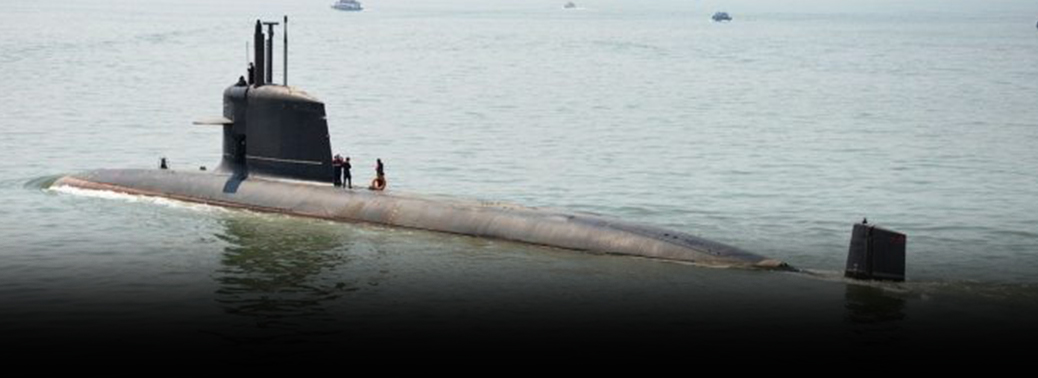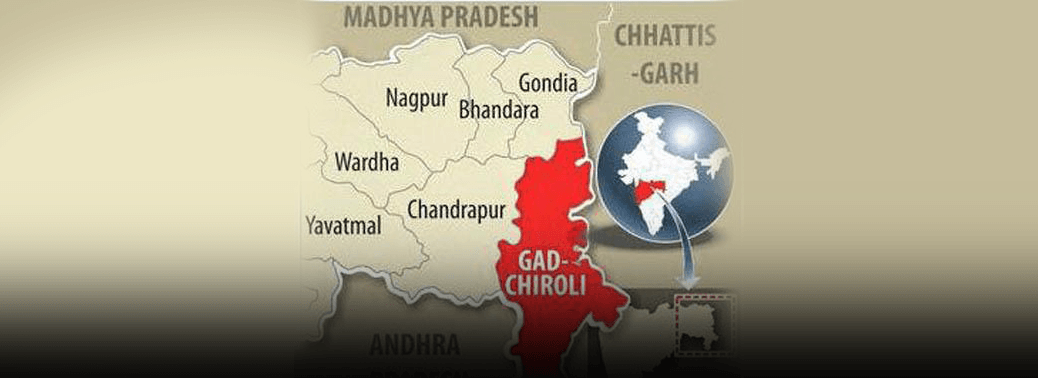Category: Defence Infrastructure
PROJECT 75
21, Jun 2019

- Under this project, the Indian Navy intends to acquire Six Diesel-Electric Submarines, which will also feature Advanced Air-Independent Propulsion systems to enable them to stay submerged for longer duration and substantially increase their operational range.
- Project 75 Mazgaon dock ship buliders limited (MDL) will maufacture six Scorpene sub marine for Indian Navy.
- Technology Transfer from Naval Group of France.
Background:
- India’s current arsenal consists of 14 conventional submarines and two nuclear- powered submarines.
- The P75I project is part of a 30-year submarine building plan that ends in 2030.
- As part of this plan, India was to build 24 submarines — 18 conventional submarines and six nuclear-powered submarines (SSNs) — as an effective deterrent against China and Pakistan.
- The first Scorpene submarine INS Kalvari under P75 was launched in October 2015.
- The third in Scorpene series INS Karanj was launched in January 2019. The fifth Scorpene-class submarine INS Vagir and sixth Scorpene-class submarine INS Vagsheer.
GADCHIROLI NAXAL ATTACK: TROOP PULLOUT MAY HAVE LEFT A HOLE IN RED ZONE SECURITY GRID
05, May 2019

Why in News:
- The unceasing requisitioning of paramilitary forces for the elections in West Bengal may have weakened the security grid around Maharashtra’s Maoist heartland, where an IED blast killed 15 jawans
Details:
- Maoists torched 25 vehicles at a road
- construction site in Kurkheda of Gadchiroli early in the morning.
- A team of the Quick Response Team of the Gadchiroli police was on way to inspect this.
- While on road in a private vehicle, these fifteen policemen and their driver were killed by a powerful explosion set off by Maoists.
- An improvised explosive device (IED) blast was set off. The slain fighters were members of the elite C-60 wing.
- This is the fourth Maoist attack, since the national election began in April, 2019, in Gadchiroli which borders Chattisgarh.
Maoists:
- Maoists in India are anti-state rebellion groups spread in mainland country covering tribal areas of seven states. The insurgency began in 1967 in remote forests of West Bengal’s village ‘Naxalbari’. While Naxalism originated in India, Maoism in China. The common thread between the two is “armed resistance” and “violence”.
- The Maoists consider Parliamentary democracy to be tools of exploiting their rivers and natural resources by capitalists and politicians. They want to establish a ‘communist society’ through armed revolution against the government.
Measures taken to deal with Left Wing Extremism:
- In 2017, a security operations doctrine called ‘SAMADHAN’ was launched.
- The acronym SAMADHAN stands for Smart leadership, Aggressive strategy, Motivation and training, Actionable intelligence, Dashboard Based KPIs (key performance indicators) and KRAs (key result areas), Harnessing technology, Action plan for each theater, and No access to financing. The MHA suggested the use of trackers for weapons, and bio-metrics in smart guns. Unique Identification number (UID) for Gelatin sticks and explosives.
- At least one UAV or Mini UAV for each of the Central Armed Police Forces (CAPF) battalions deployed in the Maoist hotbed. Joint Task Forces for operations along inter-State boundaries to be set up. Better inter-state coordination and intelligence sharing.
- 400 fortified police stations to be set up in Naxal belt.
- Resumption of Left-Wing Extremism (LWE) – specific schemes such as SRE, SIS, IAP/ACA, CIAT schools. Prevention of Money Laundering Act (PMLA) to be reviewed to ensure effective choking of fund flow to LWE groups. Fast tracking building infrastructure, with a focus on solar lights, mobile towers with 3G connectivity, and road-rail connectivity.
- Indian Army or specialized forces – such as Greyhounds – to train forces to take on naxals.
C-60 wing:
- The C-60 was created as a batch of 60 commandos to counter Maoist violence in Gadchiroli.
- As Naxal activities heightened in the coming years, a second branch was also created in 1994. They are similar to the Greyhound forces in Telangana and the SOG (Special Operation Group) units in Andhra Pradesh.
- The contribution of C-60 has been a notable one, and they have been alternatively referred to as ‘crack commandos’. The commandos were recruited from the same regions where the Naxals enlisted their own fighters.
- Having the same roots, the C-60 had operational advantages compared to other units of the state police. These include faster maneuvering, and the greater ability to converse with the local population. The C-60 is qualified for combat in difficult battlegrounds, such as dense forests and over hilly terrain. Apart from actual combat, the C-60’s task also includes facilitating Maoists to surrender and join the mainstream.
- For this, members of the unit meet the families of Maoists to apprise them of government schemes made for ex-Maoists.
Way Forward:
- The forces should be more proactive and aggressive in owning operations, rather than being reactive. To overcome the Maoist Challenge, there needs to be a comprehensive policy and not just a military or security centric approach.
Border Connectivity
28, Jul 2018

Why in News?
- Connectivity issues are troubling people living in areas bordering china in the Ladakh region, which was discussed during the BADP meeting chaired by Union Home Minister.
- The Ladakh region, which has high significance from strategic considerations, remains cut-off for almost half of the year throughout the winter season from the rest of India.
Geographical features of Ladakh:
- Ladakh is the highest plateau of the Indian state of Jammu and Kashmir with much of it being over 3,000m.
- Ladakh (“land of high passes”) is a region that currently extends from the Kunlun mountain range to the main Great Himalayas to the south, inhabited by people of Indo Aryan and Tibetan descent.
Border Area Development Program:
- Connectivity is one of the major hinderance which limits the development prospectus in border areas.
- In order to improve infrastructure, Border area development program along with India-Pakistan border was initiated in 1987 during the seventh five year plan period.
- It is implemented by the department of border management, Ministry of Home affairs through state government.
Objective:
- The objective was to meet the special development in socio-economic conditions of the people living in inaccessible and remote areas near the international border.
- The funds under BADP are provided to the States as a 100% non-lapsable Special Central Assistance.
Areas covered under BADP:
The programme has been expanded since to cover the border blocks of the 17 States (including 8 North Eastern States), which have international land borders with Pakistan, China, Nepal, Bhutan, Myanmar and Bangladesh.
BADP Guidelines:
- Coverage of BADP has been extended to cover all the villages which are located within the 0-10 Km of the International Border
- The list of schemes permissible under BADP has been expanded to include schemes/ activities relating to Swatchhta Aabhiyan , Skill Development programmes, Promotion of sports activities in border areas , Promotion of Rural Tourism/ Border Tourism, Protection of heritage sites.
- Construction of helipads in remote and inaccessible hilly areas, which do not have road connectivity, Construction of toilets in schools, public places particularly for women; Skill development training to farmers for the use of modern/ scientific technique in farming, Organic farming, etc.
- Provision for Third Party Inspection and Quality Control Mechanism under MHA for random inspections of the BADP schemes.
- Warehouses for food grains and fodder in hilly areas particularly in snow bound areas of Jammu & Kashmir Arunachal Pradesh, Sikkim, Uttarakhand, Himachal Pradesh and, E-chaupals, Agri shops, mobile media vans etc. have been made.
- Special/Specific area schemes such as composite development of at least one village of sizeable population surrounded by five-six or more villages close to the border as Model Village.
Reason for the hinderance of the program:
- Difficult terrain
- Political interference
- Corruption
- Faulty implementation
- Poor planning and lack of coordination
- Fund diversion.






